
In the River TAKAHARA --Vol.79--
The Barrier of Kansaka Artificial Dam at Dawn
After catching the beautiful char, Mr. Hiraiwa and I left the creek in the source area of the River Kiso. When we got back to the dam, we met the staff of the local forestry office. They taught us that recently some anglers had come from downstream and fished around here for several days. Every angler might have the same idea! We had planned to fish the creek around here the next day, too.We rode the bike again to pass the ridge and return to our cars in Gifu Prefecture. Darkness almost started to fall but we decided to go to the River Takahara because there was no good fishing spot here. Later our decision turned out to be a great mistake. It took 2 hours to drive on National Route to Takayama and turn right to Tochio. After passing Takayama I phoned the Hohzan Villa to make a booking for that night.

The upper and lower cascades of the barrier of Kansaka. The upper one was long from the top to the bottom.
It was in the midst of the Bon Festival, the high season of tourism. The Hohzan Villa and other hotels and guesthouses had no vacant room. I phoned every tourist information centre not only in the spa of Tochio but also the spa of Hirayu, the new spa of Hirayu and the new spa of Hodaka nearby in vain. It was nearly 9 p.m. We thought that Takayama or the spa of Gero would have no vacant room, either. Giving up a booking, we went to have dinner.
During dinner we still hoped to find a room in vain. We got prepared for the worst. Getting some food, we decided to spend the night in our cars.

A beautiful fish without any scar. It must have no experience of hooking.
Well, where should we park the car to sleep? The roadside sounded noisy and blinding car lights looked troublesome. Forest or grassland also looked uncomfortable. Finally we headed for the car park near Imadakan. It was quiet around there and had a good view. In addition, we would be able to fish first at dawn. I thought that the night would pass very quickly, remembering fishing Kuzuyama a little while before.
A Nap
After 10 p.m. we arrived at the car park at the upper reaches of the barrier of Kansaka. A starlit sky looked beautiful when we turned off the light. After sleepless night, hunger, fatigue with satisfaction and dinner, I fell asleep soon.Suddenly I came awake. It was 2 a.m. I felt as if I had taken a long sleep but only 3 hours had passed. I found the whole my body hurt probably because I just sat on the seat to sleep. I tried to sleep again, taking a comfortable position but could not. If only I had had an alarm watch. I wanted to sleep another 2 hours and fish at dawn. But if I oversleep I will miss the best chance of this season. I was sleepy and wanted to sleep but not to oversleep, which kept me away from sleep.
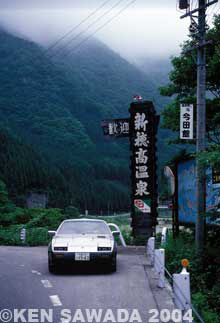
If you do not mind a steep slope you will be able to go down to the barrier from here.
Too early preparation for early-morning fishing often causes such problem. Actually I had had some bitter experiences. When I wanted to be the first angler of the creek in the morning and arrived at the fishing spot at midnight, I slept there and could not wake up at the proper time, which allowed other angler to fish first. I once slept in the tent at the bank to avoid oversleeping but other angler started fishing while I put away the tent. Now no other angler seemed to fish the River Takahara from dawn during the Bon Festival but oversleeping would destroy all my effort.
I found that Mr. Hiraiwa also woke up. He tossed and turned repeatedly in his car. When I switched on my room light, he came to me and we had some chat. It was past 3 a.m.
We got out of the car and prepared for fishing little by little. There was no need to hurry. We tried to use no light and waited for a while until our eyes got accustomed to the darkness. Then the eastern sky turned to be yellow in the same way as I fished Kuzuyama. Mr. Hiraiwa headed upstream and I headed for the barrier of Kansaka just downstream.
Most anglers approach the barrier of Kansaka from downstream. But I knew the route descending directly from the road on the right bank along the border of the barrier. It was such a steep slope that only local residents walked up and down. I had no hesitation to walk down because I was firmly decided to fish only the barrier.
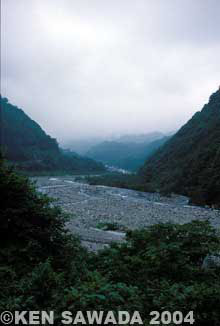
Watching upstream at dawn from the road on the barrier of Kansaka, I saw the fast current in Karukaya far away.
Now at low water season, water flowed down gently from the barrier. It was quite different from June, when 5 minute fishing had made me soaked to the skin. Walking down a steep slope, I looked down at the barrier. The swelling of the water on the both banks, which was my usual fishing spot, did not look large enough, whereas the head of the pool of the upper cascade, where fishing would be impossible at high water, looked unusually desirable. I jumped from the steep slope near to the upper cascade.
The upper cascade was longer from the top to the bottom than the lower cascade, my usual fishing spot. Usually there were 2 water-falling spots and each had a basin of the cascade like a cone. I stood at the big head of the pool of the right-bank-side one. After watching around, I checked my fishing tackle again. I worried that my leader was damaged when I walked down the steep slope in half darkness.
The leader I had prepared for evening rise was already put to the fly line. The leader was 2X, 7ft 6in as usual. I had chosen size 6 Peacock Queen as a lead fly and size 6 Muddler Sedge as a dropper.
There remained only a small number of yamame trout in the River Takahara in this season. Are they really staying here? If not, should I go downstream to fish the pool of the bedrock and go up from the heliport? While I was planning, it got light. I checked the water-falling spot and around it again.
Falling water swayed in mist. It moved in a strange way without wind. I stared very carefully into splash. Oh, some sedges were flying around the water-falling spot. As it got lighter, more sedges were flying. Some tens of them were flying in front of me. They never left the water-falling spot.
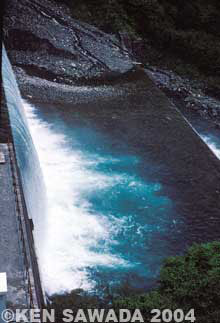
The upper cascade of the barrier watched down from the steep slope. It is inaccessible at high water.
There was a splash in front of me. Probably there was a loud cracking noise when the surface blew up although it was drowned out by the sound of falling water that echoed around. I stood still and swung the rod lightly to make the line extended to the head of the pool. The line settled on the water, slid on the surface and came to my feet quite soon. I cast the line several times. Then a big rise happened again.
This time it happened nearer to the right bank. The rise spot was suitable enough to cast the fly down and across the current from my standing point. I reeled out a little more line and cast it to the edge of the head of the pool. The line settled and drifted to the right bank. The fly passed the rise spot. Then another casting. I could not move or even breathe.
At the 3rd casting I felt the surface swelling in half darkness. At the same time the line seemed to stop sliding. In the next moment I felt a strong bite.
I felt a special alert response I usually feel when I hook a powerful fish. The fish ran directly below the head of the pool. Then it ran around the basin like a cone and tried to keep going down to the concrete wall behind the falling water like most fish that I had hooked below the barrier.
I did not mind however far it ran. I did not worry that the line reeled out. The reel often reversed but its sound was drowned out by the loud water-falling sound. Too loud sound made me feel as if I had been in silence. Somehow I was unbelievably careful of the fish, which turned out to be effective because the fish kept power for a long time.
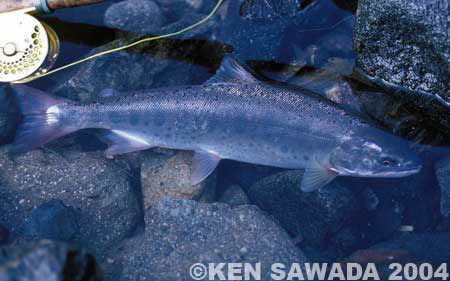
The fish became less nervous, attracted by flying sedges. It bit Peacock Queen just under the surface.
The fish came up to the surface and I scooped it into the net. I walked to the border of the barrier and stared closely at the fish. Definitely it was much longer than 30cm but well-balanced body made me poor at measuring with the eyes. Sure thing was that it was quite different from the amago trout I had caught in the creek deep in the mountains in Kiso several hours before. They were so different from each other that I could hardly recognize them as the same species.
A few minutes later I returned to the falling-water spot. There was no rise or no flying sedges. It looked like a dream that sedges had been dancing and there had been big rises only several minutes before. The river was changed into a usual low water with no sign of fish. I climbed the steep slope with the fish in my hand and took photos on the top of the barrier. That yamame tout was 37 cm long, much longer than I had first expected. Well-balanced fish always look smaller.
-- To be continued --
- NET SHOP INFORMATION
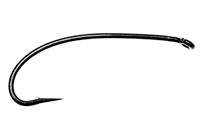
SL6 Black Spey Hooks
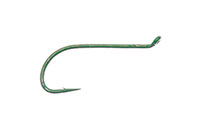
DU3 Limerick Spinner Hooks
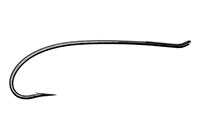
SL4 Single Bartleet Hooks
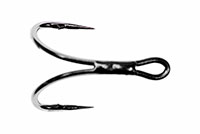
XD1 Tube Fly Double Hooks
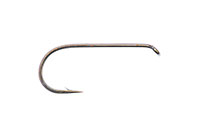
DD2 Flat Perfect Hooks
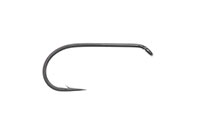
DD1 Black Terrestrial Hooks
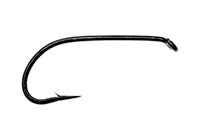
TD4 Old Limerick Wet Hooks
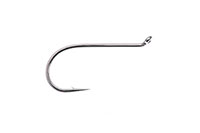
DU1 Silver May Hooks
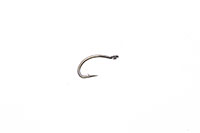
MU1 Flat Midge Hooks
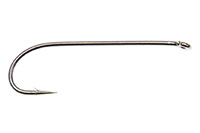
LD3 Long Limerick Hooks
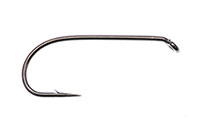
TD2 Summer Sproat Hooks
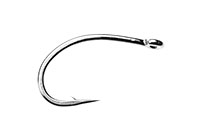
XS1 Tube Single Silver Hooks
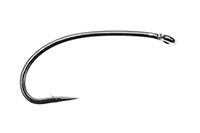
TD6 Siver Sedge Hooks

SL5 Black Spey Hooks

DU3 Limerick Spinner Hooks
- TROPHY CLUB
- FLY SHOW
- EXHIBITION
- MASTERS`
- FLY DRESSING CONTEST Archives
- TRAVELLER Archives
- TACKLE IMPRESSIONS Archives
- ANGLERS` PHOTO GALLERY Archives
- ----------------------------------------------
- トロフィークラブ
- フライショー
- エキシビション
- マスターズ
- フライドレッシング・コンテスト・アーカイヴ
- トラヴェラー・アーカイヴ
- タックル・インプレッション・アーカイヴ
- アングラーズ・フォトギャラリー・アーカイヴ
株式会社サワダ 185-0021 東京都国分寺市南町3-13-4
SAWADA'S INC. 3-13-4 Minamicho, Kokubunji, Tokyo 185-0021, Japan
写真・ドキュメントの無断転載を禁じます。
All the images and documents found on this site are owned by Ken Sawada and may not be used without permission.
But, link to this site is FREE.
Copyright © 2000 - 2025 SAWADA'S INC.. All rights reserved.
SAWADA'S INC. 3-13-4 Minamicho, Kokubunji, Tokyo 185-0021, Japan
写真・ドキュメントの無断転載を禁じます。
All the images and documents found on this site are owned by Ken Sawada and may not be used without permission.
But, link to this site is FREE.
Copyright © 2000 - 2025 SAWADA'S INC.. All rights reserved.
